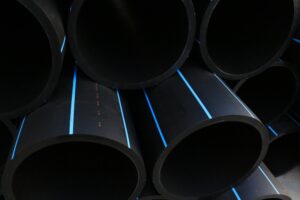Learn How to Design Effective Organizations with 7ODD

Learn How to Design Effective Organizations with 7ODD
Designing an effective organization is crucial for ensuring efficiency, productivity, and growth. The 7ODD (7 Organizational Design Dimensions) framework provides a comprehensive approach to achieving this. Let’s explore how you can leverage the Organization Development and Design 7ODD model to create a well-structured and effective organization.
Introduction to Organizational Design
Organizational design is the process of structuring an organization’s roles, responsibilities, and relationships to achieve its goals and objectives. A well-designed organization can enhance communication, streamline processes, and foster a positive work environment.
Understanding the 7ODD Framework
The 7ODD framework is a tool used to evaluate and design organizations by considering seven key dimensions. Each dimension plays a critical role in shaping the overall effectiveness of the organization. These dimensions are:
- Strategy
- Structure
- Processes
- People
- Rewards
- Culture
- Technology
Strategy
The strategy dimension focuses on the organization’s long-term goals and how it plans to achieve them. This includes identifying target markets, competitive advantages, and key performance indicators (KPIs). A clear strategy provides direction and aligns all other dimensions towards common objectives.
Structure
The structure dimension involves the arrangement of roles, responsibilities, and authority within the organization. It defines how tasks are divided, coordinated, and supervised. An effective structure ensures that there is clarity in reporting lines, decision-making processes, and communication channels.
Processes
Processes refer to the workflows and procedures that guide the day-to-day operations of the organization. This dimension focuses on how tasks are completed, how information flows, and how resources are allocated. Streamlined processes can reduce inefficiencies and improve overall productivity.
People
The people dimension encompasses the workforce of the organization. This includes recruitment, training, development, and performance management. Ensuring that the right people with the right skills are in the right roles is essential for achieving organizational goals.
Rewards
Rewards refer to the systems and practices used to motivate and compensate employees. This dimension includes salary, bonuses, benefits, and recognition programs. An effective rewards system aligns employee incentives with organizational objectives, fostering motivation and engagement.
Culture
Culture represents the shared values, beliefs, and norms that shape the behavior of individuals within the organization. A strong, positive culture can enhance collaboration, innovation, and commitment. Understanding and intentionally shaping the organizational culture is crucial for long-term success.
Technology
The technology dimension focuses on the tools and systems that support organizational operations. This includes software, hardware, and digital platforms. Effective use of technology can improve efficiency, communication, and data management.
Integrating the 7ODD Dimensions
To design an effective organization, it’s important to consider how each of the 7ODD dimensions interact and support one another. A holistic approach ensures that changes in one dimension are aligned with and reinforced by changes in others.
Conclusion
Designing an effective organization is a complex but essential task. By leveraging the 7ODD framework, organizations can create a well-rounded and cohesive structure that supports their strategic goals. Each dimension of the 7ODD model plays a vital role in shaping an organization’s success, and understanding these dimensions can lead to better decision-making and improved organizational performance.





